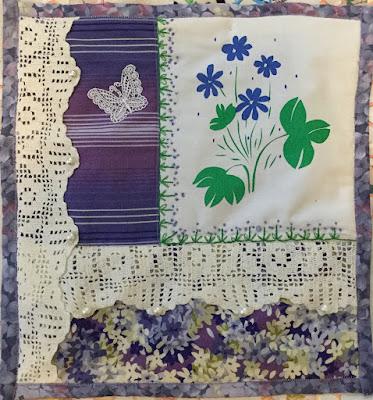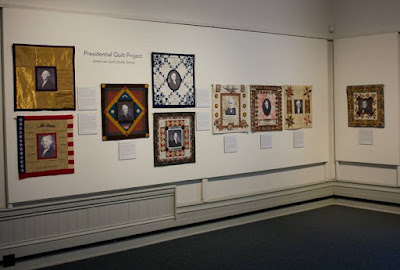Rumer Godden is one of my favorite 'forgotten' authors so I am thrilled that Open Road Media is bringing Godden's books to the reading public in ebook form. Two of Godden's Catholic novels were made available to me through NetGalley.
 Five for Sorrow, Ten For Joy
Five for Sorrow, Ten For Joy explores the role of the Catholic faith in the lives of women in a small, isolated community of nuns. The nuns bring baggage from their past lives, seeking refuge in the love and forgiveness of Jesus. Godden slowly reveals the journey of Sister Marie Lise du Rosaire in a series of backflashes and alternate voices.
Elizabeth Fanshawe has been in a series of prisons. As an orphan she lived with a demanding Aunt. Only 20 at the end of WWII, Lise is caught up in the wild celebrations. Drunk and lost, she is taken home by Patrice, a wealthy, older man. He takes her in, and she believes he loves her; this illusion is another prison since he wants her for his brothel--another prison.
"I was green as a lettuce leaf...I thought he loved me...It didn't occur to me I was a whore."
Lise became Madame Lise Ambard, working in a high class house of ill repute. Scared in a fight, she is reborn as La Balafree and at twenty-three manages the brothel for Patrice. She still is under the illusion that he loves her best.
Lise rescues a drunken waif, Vivi, a fourteen-year-old girl who had been living on the streets for two years. Her Papa had abused her and her sister; the sister secretly gave birth to a baby which they left to die. Lise found Vivi clutching a rosary in her hands. Lise hopes to sent Vivi to school but Patrice is stunned by the girl's beauty and takes her as his new favorite lover, displacing Lise. When Vivi lusts for a local boy, Lise assists her to run away with him. The results are disastrous. Lise's illusions bring her to murder thinking she is saving a former whore, Vivi, from reentering the brothel. She justly serves ten years in prison.
While in prison for murder, Lise meets the Dominicaines of Bethanie nuns whose message of love and forgiveness changes her life. Upon her release at age thirty-seven she enters the convent, intent on becoming a novitiate. When asked if the convent were not another prison with its rules and obedience, Lise replies, "Not prison, freedom. That's the paradox. I believe it will be such freedom as I can't imagine now.'
Lise's past catches up to her, meeting Vivi again. She is impelled to help the irredeemable Vivi, which results in another murder.
Although the novel is about faith and redemption, another aspect of the novel is especially relevant today: The treatment of women by men.
"There were, of course, the irrecuperables, the unrescuable, who seemed to have evil in their skin, as if the devil had sown the seed that made them bad through and through--but many, Lise was certain, were in prison not because of what they had done, but because of what other people, especially men, had done to them, and some of us, like me, thought Lise, were in prison for their illusions."
A fellow newly released prisoner, Lucette, follows Lise and wants to stay where she stays. Lise explains Lucette must have a calling. "It's as if God put out a finger and said, "You, " Lise explains. Lucette retorts, "God hasn't got a finger. He can't have because there isn't a God. If there were he wouldn't have let what happened, happen to me--or you." "That's what I used to think, but that wasn't God; it was us." Lise responds. "Us? Not us, it was them...I see you are going to escape here where there are no men..I don't blame you...I hate men, all of them."
Lise, Vivi, and Lucette were all victims of men who abused them. A side story of Jackie, a girl the Bethanie nuns tried to save, ends in suicide; the girl could not recover from a gang rape. Reading this book I was reminded of
The Real La Traviata by Rene Weiss
, how as a child Marie Duplessus was forced to trade sexual favors for food, was pimped by her own father, became a mistress and the inspiration behind Hugo's novel Camille and the opera La Traviata.
Lise and Lucette find solace in faith and the religious life, the community of women whose acceptance is transformative. It was prison that sets Lise free. She sees the divine spark in all lives, especially the wicked. Marie Lise is able to use her experience to help other women in prison. She never gives up hope for Vivi's redemption.
The novel has it's flaws. I wish there was more about post-war France and how it impacted the women who take refuge in the brothel, and Lise's role as Madam is given as historical fact but lacks authenticity; I can't imagine her as a procuress of young women. But Lise's story is compelling and the theme is still relevant.
Black Narcissus is Godden's most well known novel, especially because its the
film adaptation starring Deborah Kerr. The novel again concerns a group of women, Anglican nuns, in a closed, isolated community, struggling with personal demons and their commitment to God.
"They saw the great slope of hill and the valley and hills rising across the gulf to the clouds; then they saw what they had missed at first, because they had not looked as high. Across the north the Himalayas were showing with the peak Kanchenjunga straight before them."
The General's Palace at Mopu has been offered to the Sisters. The Brothers had been invited first but only lasted five months before leaving. The Palace had been built by the General's father, a country palace with the finest view in India; he installed his wives in the palace and it became known as the House of Women, from which light and music emanated all night. The current General is Progressive. He turned out the women and hopes the sisters will turn the palace to good--a sanctification. A Holy Man, once famous and rich, sits near the path, his eyes fixated on the god of the mountain, unmoving and detached from the world.
The General's agent Mr Dean warns, 'It's no place for a nunnery." But Sister Clodagh looks at the orchids on the terrace and the eagles flying in the clouds and cries, "It's an inspiration just to stand here. Who could live here and not feel close to God!" Sister Clodagh has been overconfident and authoritative, but Mr. Dean recalls to mind her youthful, unrequited love.
"We call it Kanchenjunga and we believe that God is there. No one can conquer that mountain and they never will. Men can't conquer God, they only go mad for the love of Him. ..You have to be very strong to live close to God or a mountain, or you'll turn a little mad."
Each sister is drawn to worldly joys, gardening or becoming too attached to the children, slowly forgetting their commitments, order seeping away. Beautiful young people enter their doors for education, the young heir scented with Black Narcissus, dressed in silks and jewels, and the wayward beauty Mr. Dean hoists upon them when he tires of her pursuit. Oh, the ever present Mr Dean, so unsuitably dressed, with such a bad reputation, whose very presence arouses memory and inspires jealousy and desire. Especially in Sister Ruth, a troublesome nun who seeks 'self-importance'.
The novel ends in a whirlwind of disorder, with a thrilling Gothic climax.
Open Road Media has acquired twelve Godden titles and I am thrilled to think of her rediscovery. I have been collecting copies of her titles for years...
I especially love her novels set in India and her wonderful portraits of children and the young.
Learn more about the remarkable life and career of Rumer Godden at
http://www.rumergodden.com/index.php
 |
Rumer Godden, 1947 portrait for Vogue magazine
http://www.rumergodden.com/biography.php |








































